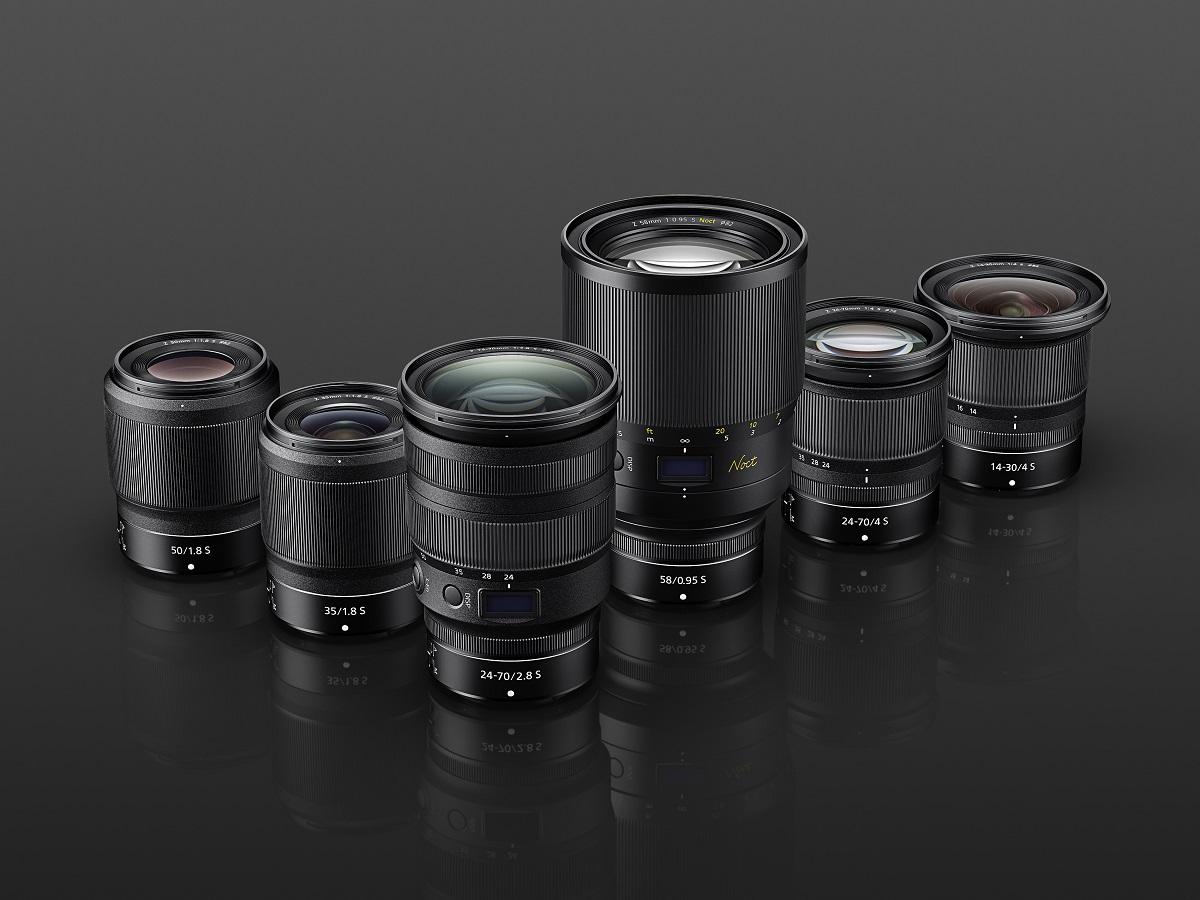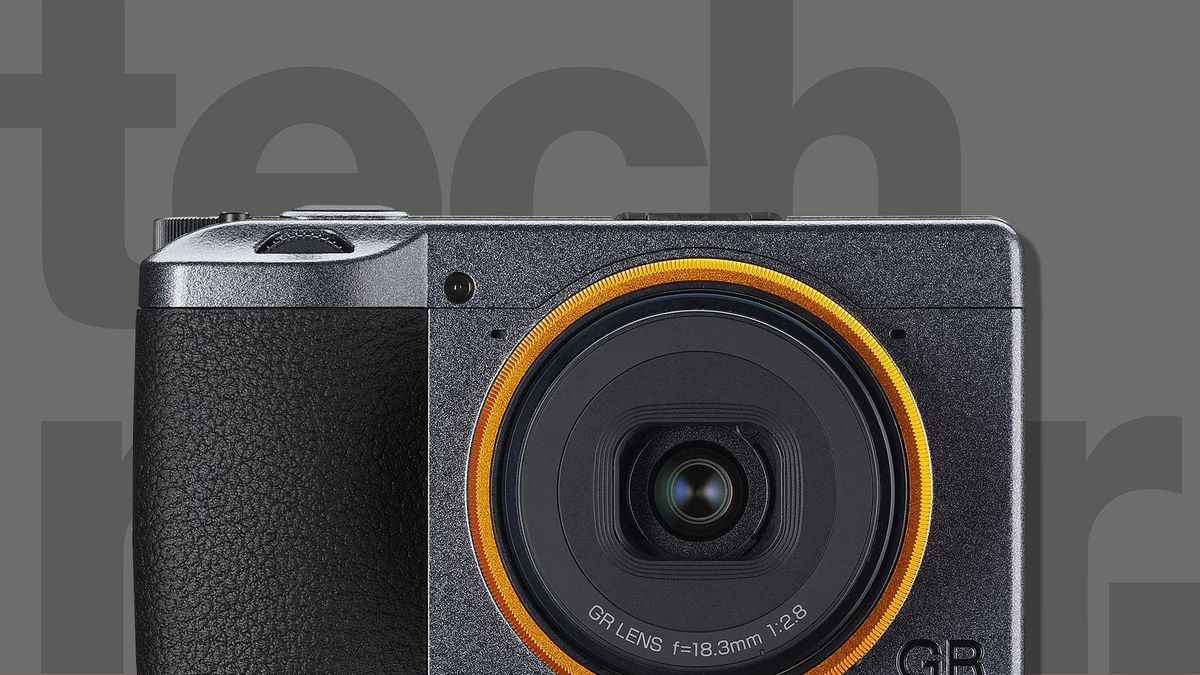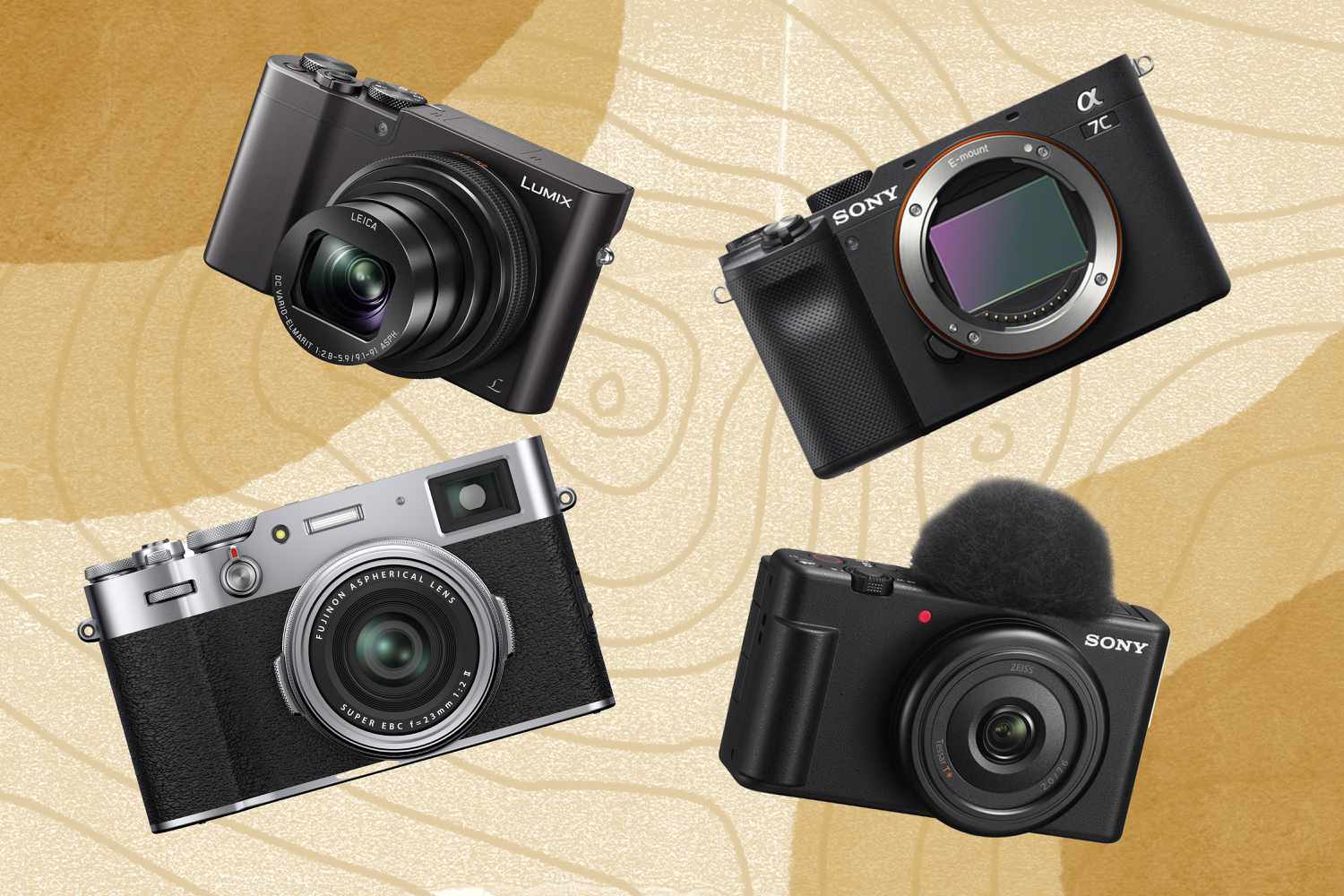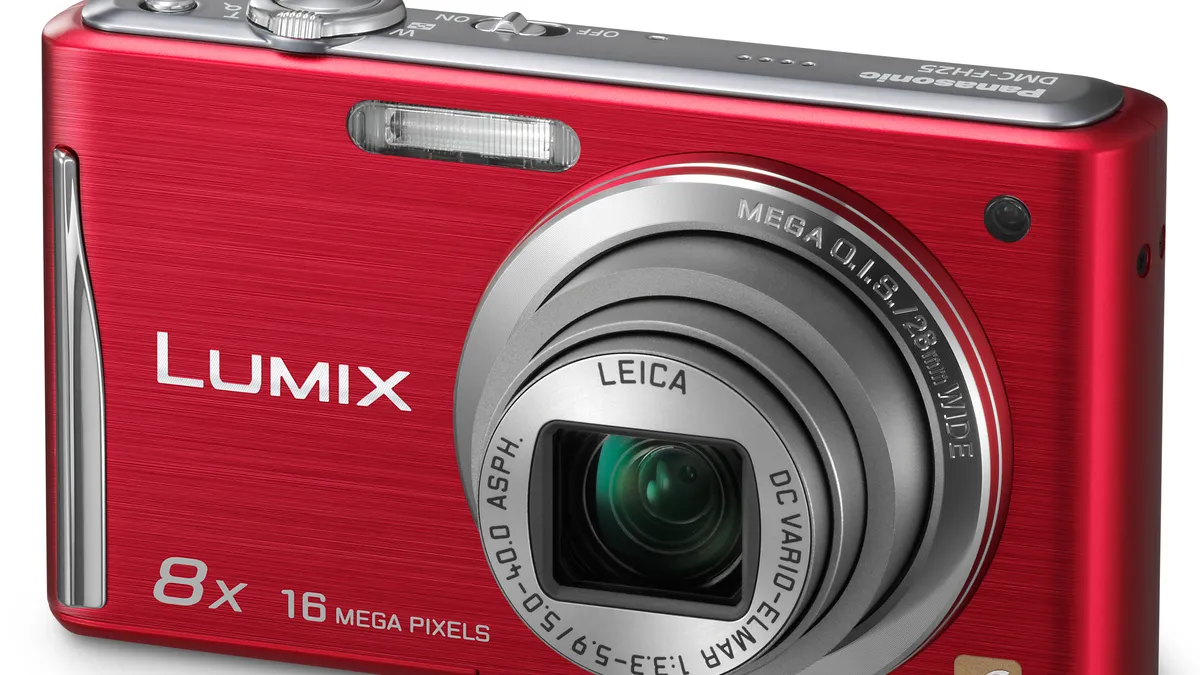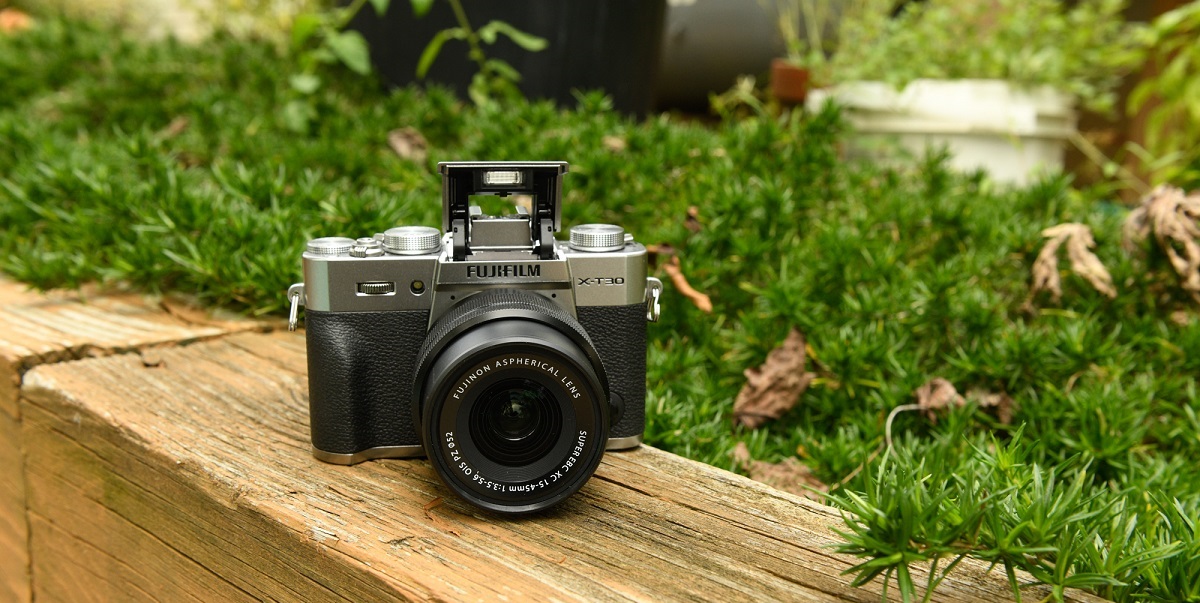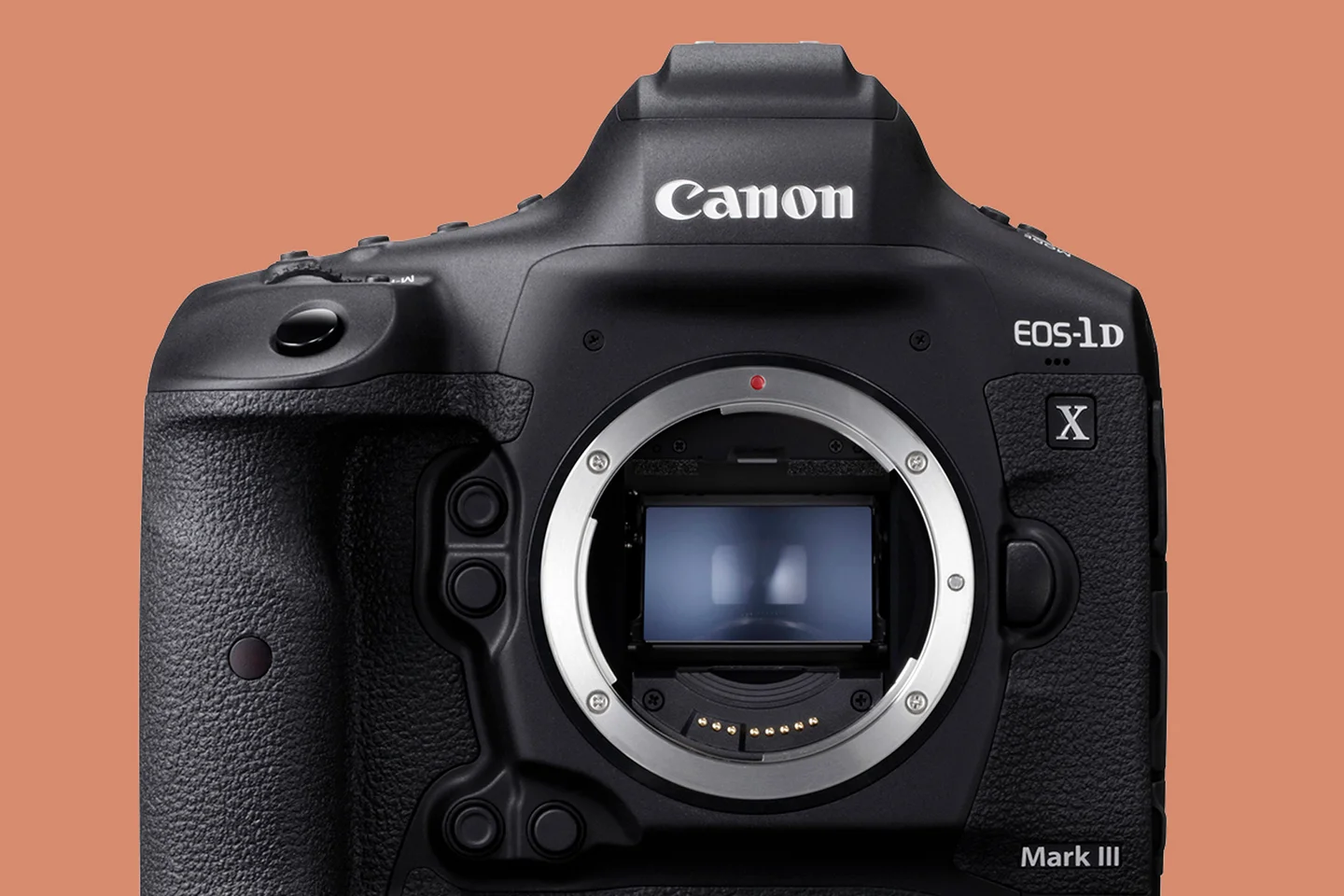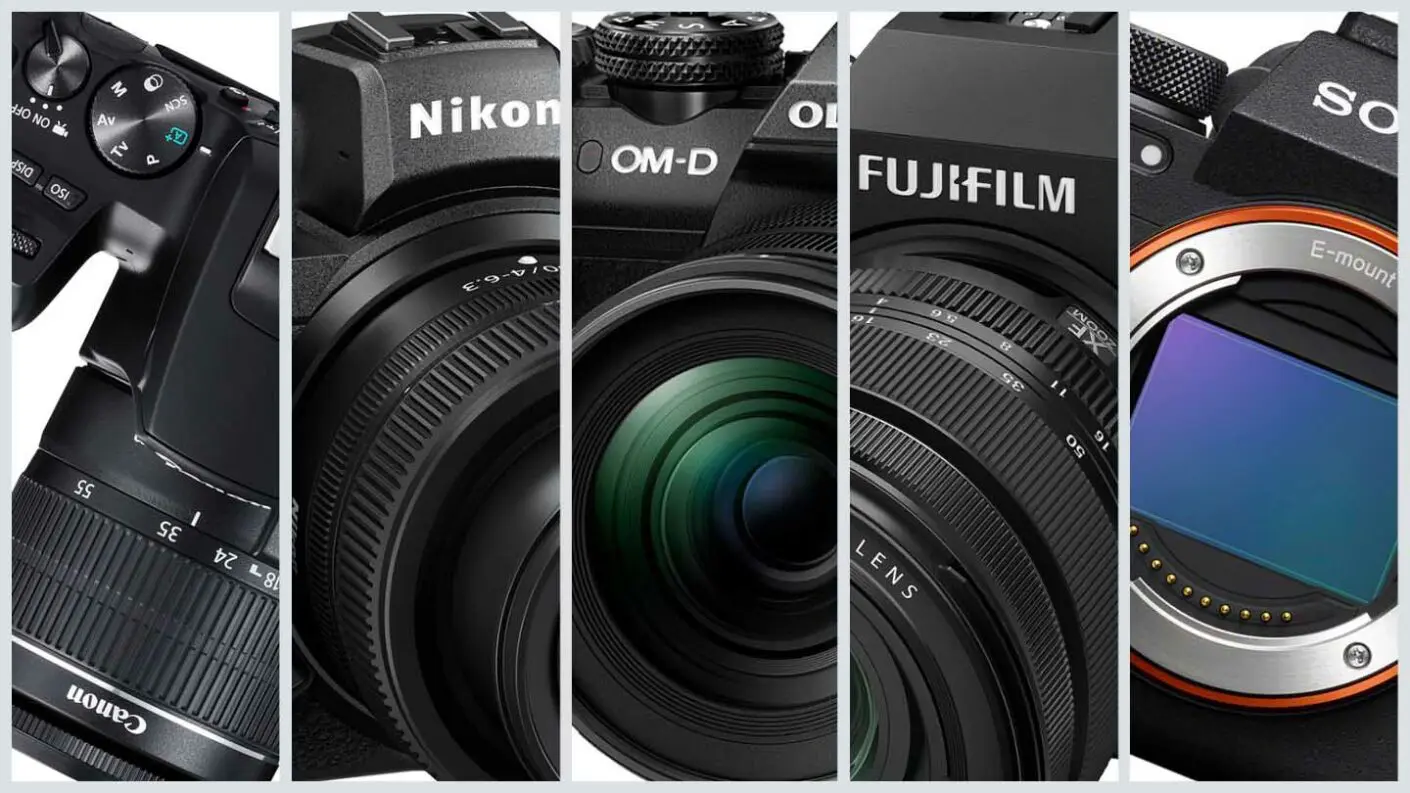Introduction
When it comes to digital photography, choosing the right camera lens is crucial for capturing high-quality images. The lens you use can greatly impact the sharpness, clarity, and overall aesthetics of your photographs. However, with so many options available, finding the best digital camera lens can be a daunting task.
Whether you are a professional photographer or an enthusiast, there are several factors you should consider when selecting a digital camera lens. Each lens has its own unique characteristics and is designed for specific types of photography. Understanding these factors will not only help you make an informed decision but also ensure that your lens is perfectly suited for your photographic needs.
In this article, we will explore the important aspects to consider when choosing a digital camera lens. We will also discuss the pros and cons of prime and zoom lenses, as well as explain the concepts of focal length and aperture. Additionally, we will delve into which lenses are best suited for various types of photography such as landscape, portrait, wildlife, macro, and low-light photography.
By the end of this article, you will have a better understanding of the different types of camera lenses available and be able to make an informed decision when choosing the best lens for your digital camera. So grab your camera and let’s dive in!
Factors to Consider When Choosing a Digital Camera Lens
Choosing the right digital camera lens requires careful consideration of various factors to ensure that it suits your specific photography needs. Here are some key factors to keep in mind:
- Focal Length: Focal length determines the angle of view and magnification of the lens. A lens with a shorter focal length captures a wider angle of view, making it ideal for landscape and wide-angle photography. On the other hand, a lens with a longer focal length offers a narrower angle of view and is better suited for telephoto and zoom photography.
- Aperture: The aperture of a lens controls the amount of light that enters the camera. A wider aperture (i.e., lower f-stop value) allows more light to enter, which is beneficial for low-light conditions and creating a shallow depth of field. A narrow aperture (i.e., higher f-stop value) restricts the amount of light, resulting in a larger depth of field, suitable for landscapes and architecture photography.
- Image Stabilization: Image stabilization minimizes camera shake, resulting in sharper images. This feature is especially crucial when using telephoto lenses or shooting in low-light situations. Look for lenses with built-in optical stabilization or consider using a tripod for added stability.
- Budget: Set a realistic budget for your lens purchase. Determine the maximum amount you are willing to spend and consider whether you are buying a lens for professional or hobbyist purposes. Remember, lens quality often corresponds with cost, so weigh your options accordingly.
- Compatibility: Ensure that the lens you choose is compatible with your camera’s mount system. Different camera brands use various mount systems, so double-check compatibility before making a purchase.
- Weight and Size: Consider the weight and size of the lens, as it will affect portability and convenience. If you are a frequent traveler and need a lightweight setup, opt for smaller lenses or those designed for mirrorless cameras.
- Special Features: Depending on your photography style and preferences, you may want to consider lenses with special features such as weather sealing, fast autofocus, or specific lens coatings for superior image quality.
By carefully evaluating these factors, you can narrow down your options and choose a digital camera lens that best meets your specific requirements. Keep in mind that the perfect lens for one type of photography may not be suitable for another. Hence, consider your photography goals and subjects when making your decision.
Prime vs. Zoom Lenses: Pros and Cons
When it comes to digital camera lenses, you’ll often come across the terms “prime” and “zoom”. These two types of lenses have their own advantages and disadvantages, and understanding their differences can help you make an informed decision when choosing a lens for your photography needs.
Prime Lenses:
Prime lenses have a fixed focal length, meaning they do not zoom in or out. They offer a specific angle of view, which can be wide, normal, or telephoto. Here are some pros and cons of prime lenses:
Pros:
- Image Quality: Prime lenses are known for their exceptional image quality. With fewer moving parts and a simpler optical design, they often produce sharper and more distortion-free images compared to zoom lenses.
- Wider Aperture: Prime lenses typically have wider maximum apertures, allowing for better low-light performance and the ability to create a shallow depth of field, resulting in beautiful background blur.
- Portability: Prime lenses are usually smaller and lighter than their zoom counterparts, making them more portable and convenient to carry around.
- Price: In general, prime lenses tend to be more affordable than zoom lenses of comparable quality. If you are on a budget, prime lenses can offer excellent value for money.
Cons:
- No Zoom Capability: One of the main disadvantages of prime lenses is their fixed focal length, which means you need to physically move closer or farther from the subject to adjust the composition. This can be inconvenient, especially when shooting subjects that are far away or require quick changes in framing.
- Limited Versatility: Since prime lenses have a fixed focal length, they are less versatile compared to zoom lenses. They may not be the best choice for situations where you need to quickly switch between different focal lengths.
Zoom Lenses:
Zoom lenses, as the name suggests, offer adjustable focal lengths, allowing you to zoom in and out to adjust the composition without physically moving. Here are the pros and cons of zoom lenses:
Pros:
- Flexibility and Convenience: The ability to vary the focal length makes zoom lenses extremely versatile and convenient. They allow you to quickly adjust your composition without the need to change lenses or physically move.
- Wider Range of Focal Lengths: Zoom lenses cover a wide range of focal lengths, making them suitable for various types of photography, from wide-angle landscapes to telephoto wildlife shots.
Cons:
- Image Quality: While modern zoom lenses have significantly improved in terms of image quality, they may not match the sharpness and overall optical performance of prime lenses, especially at the extreme ends of the zoom range.
- Narrower Aperture: Zoom lenses generally have narrower maximum apertures compared to prime lenses, which can limit their low-light performance and ability to create a shallow depth of field.
- Size and Weight: Due to their more complex optical design, zoom lenses tend to be larger and heavier than prime lenses, which can make them less portable and cumbersome, especially when traveling.
- Price: Generally speaking, zoom lenses are often more expensive than prime lenses with similar specifications. Higher-quality zoom lenses can come with a hefty price tag, particularly those with wider zoom ranges.
Ultimately, the choice between a prime and zoom lens depends on your shooting style, specific photography needs, and personal preferences. Consider factors such as image quality, versatility, convenience, and budget when deciding which type of lens is best suited for your photography endeavors.
Understanding Focal Length and Aperture
When it comes to digital camera lenses, two essential concepts to grasp are focal length and aperture. Understanding these concepts will not only help you choose the right lens but also allow you to control the depth of field and light entering your camera.
Focal Length:
Focal length refers to the distance between the lens and the camera’s image sensor when the subject is in focus. It determines the angle of view and magnification of the lens. Here’s what you need to know:
Short Focal Length: Lenses with short focal lengths, often referred to as wide-angle lenses, have a wider field of view. They are suitable for capturing expansive landscapes, architecture, and group shots. The shorter the focal length, the wider the angle of view.
Long Focal Length: Lenses with long focal lengths, known as telephoto lenses, have a narrower field of view. They are ideal for wildlife, sports, and subjects that are farther away. The longer the focal length, the narrower the angle of view.
Zoom Lenses: Zoom lenses have a variable focal length that allows you to adjust the angle of view. They offer versatility, enabling you to zoom in for close-ups or zoom out for wider shots. For example, a zoom lens may have a focal length range of 24-70mm, allowing you to capture anything from wide-angle to moderate telephoto shots.
Aperture:
Aperture refers to the opening in the lens through which light enters the camera. It is measured in f-stop values such as f/1.8, f/2.8, or f/4. Larger aperture numbers (smaller openings) indicate a narrower aperture, while smaller numbers (larger openings) represent a wider aperture. Here’s what you should know:
Wide Aperture: Lenses with a wide maximum aperture (e.g., f/1.8) allow more light to enter the camera. This is beneficial in low-light situations, as it enables faster shutter speeds, reducing the risk of camera shake. Wide apertures also create a shallow depth of field, blurring the background and emphasizing the subject.
Narrow Aperture: Lenses with a smaller maximum aperture (e.g., f/4.0) allow less light to enter the camera. This can be advantageous in brightly lit environments or when you want to capture a larger depth of field, ensuring that both the subject and background are in focus.
Depth of Field:
The combination of focal length and aperture determines the depth of field in your photographs. Depth of field refers to the range of distance that appears sharp in an image. A wider aperture (smaller f-stop value) results in a shallower depth of field, where the subject is in focus, while the background is blurred. Conversely, a narrower aperture (larger f-stop value) increases the depth of field, keeping both the subject and background in focus.
Understanding focal length and aperture allows you to make intentional decisions about composition, lighting, and the overall aesthetics of your photographs. Consider the type of photography you enjoy, the desired effect, and the available lighting conditions when choosing the right combination of focal length and aperture for your digital camera lens.
Which Lens is Best for Landscape Photography?
Landscape photography aims to capture the grandeur and beauty of the natural world. To do justice to stunning landscapes, choosing the right lens is essential. Here are some factors to consider when selecting a lens for landscape photography:
Wide-Angle Lens:
A wide-angle lens is a popular choice for landscape photography due to its ability to capture a broad field of view. Here’s why it’s a great option:
- Wide Field of View: Wide-angle lenses typically have a focal length between 14-35mm, allowing you to fit more of the scene into the frame. This is ideal for expansive landscapes, seascapes, and capturing the vastness of mountain ranges.
- Foreground Emphasis: Wide-angle lenses accentuate objects in the foreground, creating a sense of depth and adding visual interest to your landscape compositions. This is particularly useful when capturing leading lines or including foreground elements such as rocks or flowers.
- Sharpness and Detail: Wide-angle lenses often have excellent edge-to-edge sharpness, ensuring that details in the entire frame are well-defined. This is crucial when capturing intricate textures in rocks, foliage, or water.
- Distortion: Wide-angle lenses can introduce some distortion, but this can be used creatively to exaggerate perspectives and add a unique touch to your landscape photographs.
Recommendation: A popular choice for landscape photography is a 16-35mm wide-angle zoom lens. This versatile lens provides the flexibility to adjust the field of view according to the scene while maintaining excellent image quality.
Other Considerations:
While wide-angle lenses are the go-to for landscape photography, there are a few additional factors to consider:
- Aperture: Look for a wide-angle lens with a wide maximum aperture (e.g., f/2.8 or f/4) to ensure adequate light gathering capability and the ability to create a shallow depth of field.
- Filter Compatibility: Check if the lens has a filter thread to allow you to attach polarizing filters for enhancing skies, neutral density filters for long exposure effects, or graduated filters for balancing exposure between the sky and the foreground.
- Weather Sealing: If you plan on shooting landscapes in challenging weather conditions, consider a lens with weather sealing to protect against dust and moisture.
In summary, a wide-angle lens, such as a 16-35mm zoom, is well suited for landscape photography. Its wide field of view, foreground emphasis, sharpness, and detail make it an excellent choice for capturing the expansive beauty of nature. Additionally, consider the lens’s aperture, filter compatibility, and weather sealing to enhance your landscape photography experience.
Which Lens is Best for Portrait Photography?
Portrait photography aims to capture the essence and personality of the subject. To achieve stunning portraits, selecting the right lens is crucial. Here are some factors to consider when choosing a lens for portrait photography:
Medium Telephoto Lens:
A medium telephoto lens is the ideal choice for portrait photography due to its ability to capture subjects at a flattering distance. Here’s why it’s a great option:
- Compression and Flattering Perspective: Medium telephoto lenses, typically ranging from 85-135mm, provide a natural perspective without distorting facial features. The slight compression creates flattering portraits, making them a popular choice among professional portrait photographers.
- Background Separation: With a medium telephoto lens, you can easily achieve a shallow depth of field, thanks to wider apertures like f/1.8 or f/2.8. This allows for beautiful background blur, drawing attention to the subject and isolating them from the surroundings.
- Subject Comfort: The longer focal length of a medium telephoto lens allows you to maintain a comfortable working distance from the subject. This can help them relax, resulting in more natural and candid expressions.
- Sharpness and Detail: Medium telephoto lenses are known for producing sharp and highly detailed images, capturing fine textures and subtle nuances in facial features.
Recommendation: An 85mm or 105mm prime lens is a popular choice for portrait photography. These focal lengths provide a flattering perspective, excellent background separation, and superb image quality.
Other Considerations:
While medium telephoto lenses are often the go-to for portrait photography, there are a few additional factors to consider:
- Aperture: Look for lenses with wider maximum apertures (e.g., f/1.4 or f/1.8) to allow for better low-light performance and to achieve that beautiful background blur.
- Image Stabilization: If your lens has built-in image stabilization, it can help minimize camera shake, especially when shooting handheld in dimly lit environments.
- Auto-Focus Capability: Ensure that the lens has fast and accurate autofocus capabilities, as capturing sharp portraits of moving subjects can be challenging without it.
- Consider Prime or Zoom: While prime lenses are known for their exceptional image quality, zoom lenses provide versatility and the convenience of adjusting the focal length without changing lenses. Consider your shooting style and preferences when deciding between the two.
Summing up, a medium telephoto lens, such as an 85mm or 105mm prime, is highly recommended for portrait photography. It offers a flattering perspective, beautiful background separation, and excellent image quality. Take note of factors such as aperture, image stabilization, autofocus capability, and whether you prefer a prime or zoom lens when selecting the perfect lens for capturing stunning portraits.
Which Lens is Best for Wildlife Photography?
Wildlife photography requires capturing animals in their natural habitat, often from a distance. To effectively photograph wildlife, it’s essential to choose the right lens. Here are some factors to consider when selecting a lens for wildlife photography:
Telephoto or Super-Telephoto Lens:
A telephoto or super-telephoto lens is the preferred choice for wildlife photography as it allows you to capture distant subjects without disturbing them. Here’s why they are great options:
- Long Reach: Telephoto lenses, typically ranging from 200-400mm, offer a long focal length, enabling you to zoom in and bring distant subjects closer. Super-telephoto lenses, with focal lengths exceeding 400mm, provide an even greater reach, allowing you to photograph elusive and skittish wildlife.
- Subject Isolation: The long focal length combined with wider apertures, such as f/2.8 or f/4, create a shallow depth of field, effectively isolating the subject from the busy background. This helps draw attention to the animal and creates visually appealing images.
- Sharpness and Detail: Telephoto lenses are designed to deliver exceptional image quality, often with advanced optical elements, resulting in crisp and highly detailed wildlife photographs, showcasing intricate patterns and textures.
- Stability and Image Stabilization: Longer lenses can be heavy and require a stable base for handheld shooting. Consider lenses with built-in image stabilization or use a tripod or monopod to ensure steady shots, especially in low-light conditions.
Recommendation: A 300mm or 400mm telephoto lens is an excellent choice for wildlife photography. These lenses provide a good balance between reach and portability, allowing you to capture a wide range of wildlife subjects effectively.
Other Considerations:
While telephoto lenses are most commonly used for wildlife photography, there are a few additional factors to consider:
- Aperture: Look for lenses with wider maximum apertures (e.g., f/2.8 or f/4) to allow for better low-light performance and the ability to blur distracting backgrounds.
- Autofocus Speed and Accuracy: Wildlife photography often involves capturing fast-moving subjects. Ensure that the lens has advanced autofocus capabilities, including fast and accurate tracking, to help you capture sharp and in-focus images.
- Weather Sealing: Wildlife photography often takes place in challenging outdoor environments. Consider a lens with weather sealing to protect against dust, moisture, and extreme temperatures.
- TC Compatibility: Some telephoto lenses also offer compatibility with teleconverters (TC), which effectively increase the focal length, providing an even greater reach for photographing distant wildlife.
Summing up, a telephoto or super-telephoto lens, such as a 300mm or 400mm, is highly recommended for wildlife photography. These lenses offer a long reach, subject isolation, sharpness, and detail. Remember to consider factors such as aperture, autofocus speed and accuracy, weather sealing, and compatibility with teleconverters when selecting the perfect lens to capture stunning wildlife photographs.
Which Lens is Best for Macro Photography?
Macro photography involves photographing small subjects and capturing intricate details up close. To excel in macro photography, it’s crucial to choose the right lens. Here are some factors to consider when selecting a lens for macro photography:
Macro Lens:
A dedicated macro lens is specifically designed for close-up photography, allowing you to capture subjects at life-size or greater magnification. Here’s why they are considered the best option for macro photography:
- Close Focusing Distance: Macro lenses are designed to focus at extremely close distances, enabling you to capture tiny subjects and reveal intricate details that are otherwise not easily visible to the naked eye.
- Magnification: Macro lenses provide 1:1 magnification, which means that the subject is reproduced on the camera’s image sensor at life-size. This results in highly detailed images with impressive levels of clarity and sharpness.
- Optical Quality: Macro lenses are built with precision optics to ensure excellent image quality and minimal distortion. They control aberrations and deliver edge-to-edge sharpness, capturing fine textures and subtle details.
- Flat Field of Focus: Macro lenses are designed to maintain a flat field of focus, meaning that objects at different distances within the frame will remain sharp. This is particularly important when working with flat subjects or shooting at higher magnifications.
- Working Distance: Macro lenses offer a longer working distance, which is the distance between the front lens element and the subject. This provides more room for proper lighting, avoiding shadow casting on the subject and reducing the risk of disturbing small or delicate subjects.
Recommendation: A 100mm macro lens is a popular choice for macro photography. This focal length strikes a balance between versatility and working distance, allowing you to capture a wide range of macro subjects effectively.
Other Considerations:
While a dedicated macro lens is often the best choice for macro photography, here are a few additional factors to consider:
- Aperture: Look for a macro lens with a wide maximum aperture (e.g., f/2.8) to allow for better low-light performance and the flexibility to create a shallow depth of field or increase the depth of field as needed.
- Image Stabilization: When working up close with small subjects, even the slightest camera shake can blur your images. Consider a macro lens with built-in image stabilization or use a tripod or focus stacking techniques for sharper results.
- Compatibility with Accessories: Some macro lenses offer compatibility with extension tubes or teleconverters, allowing for increased magnification or focusing at even closer distances when needed.
In summary, a dedicated macro lens, such as a 100mm, is highly recommended for macro photography. These lenses provide close focusing distances, 1:1 magnification, excellent optical quality, and a flat field of focus. Pay attention to factors such as aperture, image stabilization, and compatibility with accessories to enhance your macro photography capabilities and capture stunning close-up shots with intricate details.
Which Lens is Best for Low Light Photography?
Low light photography presents unique challenges, as capturing sharp and well-exposed images in dimly lit conditions can be difficult. To excel in low light photography, it’s essential to choose a lens that can effectively gather and utilize available light. Here are some factors to consider when selecting a lens for low light photography:
Wide Aperture Lens:
A lens with a wide maximum aperture (small f-stop value) is ideal for low light photography. Here’s why it’s a great choice:
- Light Gathering Capability: A wide aperture allows more light to enter the lens, increasing the camera’s sensitivity to light. This proves especially beneficial in low light situations where there is limited available light.
- Fast Shutter Speeds: With a wide aperture, you can achieve faster shutter speeds, reducing the risk of camera shake and motion blur. This is particularly important when capturing moving subjects in low light.
- Shallow Depth of Field: Wide aperture lenses create a shallow depth of field, blurring the background and isolating the subject. This can add artistic flair and draw attention to the main focal point in your low light images.
- Low Noise Performance: By allowing more light into the camera, wide aperture lenses help reduce the need to raise the ISO sensitivity. This, in turn, reduces image noise, resulting in cleaner and more detailed low light photographs.
Recommendation: A prime lens with a wide maximum aperture, such as a 35mm f/1.4 or a 50mm f/1.8, is a popular choice for low light photography. These lenses offer excellent light gathering capability, allowing for sharp images even in challenging lighting conditions.
Other Considerations:
While a wide aperture lens is often the best option for low light photography, here are a few additional factors to consider:
- Image Stabilization: Look for lenses with built-in optical stabilization, which helps compensate for camera movement and allows for handheld shooting in low light without compromising image sharpness.
- Prime vs. Zoom: Prime lenses generally have wider maximum apertures compared to zoom lenses. However, if you prefer the flexibility of zoom lenses, look for those with a constant wide aperture throughout the zoom range.
- Low Light Autofocus Performance: Some lenses have advanced autofocus systems specifically designed for low light conditions, ensuring fast and accurate focusing even in the absence of adequate light.
- Bokeh Quality: Consider the quality of the bokeh produced by the lens when shooting wide open. Smooth and pleasing bokeh can enhance the aesthetic appeal of low light images, especially when creating a shallow depth of field.
- Weight and Size: Take into account the weight and size of the lens, as it may influence portability and comfort during long hours of low light photography.
In summary, a wide aperture lens, such as a 35mm or 50mm prime, is highly recommended for low light photography. These lenses offer excellent light gathering capability, fast shutter speeds, and shallow depth of field. Consider factors such as image stabilization, prime versus zoom, low light autofocus performance, bokeh quality, and weight and size to select the perfect lens for capturing stunning low light photographs.
Conclusion
Choosing the right lens for your digital camera is crucial to capturing high-quality images in various photographic genres. Consider the specific factors related to each type of photography to maximize your results:
In landscape photography, a wide-angle lens, such as a 16-35mm zoom, is highly recommended. Its wide field of view, foreground emphasis, and sharpness make it ideal for capturing expansive scenes and intricate details in nature.
For portrait photography, a medium telephoto lens, like an 85mm or 105mm prime, is an excellent choice. Its flattering perspective, beautiful background separation, and excellent image quality ensure captivating portraits.
When it comes to wildlife photography, a telephoto or super-telephoto lens, such as a 300mm or 400mm, is essential. These lenses provide the necessary reach, subject isolation, and image quality to capture stunning images of distant and elusive wildlife.
In macro photography, a dedicated macro lens, like a 100mm, is the best option. With its close focusing distance, 1:1 magnification, and excellent optical quality, it allows for capturing intricate details and revealing the beauty of small subjects.
For low light photography, a wide aperture lens, such as a 35mm or 50mm prime, is recommended. Its light gathering capability, fast shutter speeds, and ability to create a shallow depth of field help capture sharp and well-exposed images in challenging lighting conditions.
Remember to consider additional factors such as image stabilization, autofocus performance, compatibility with accessories, and the overall weight and size of the lens based on your specific needs and shooting preferences.
By understanding the different types of camera lenses available and considering the specific requirements of each photography genre, you can make informed decisions and choose the best lens to enhance your photography skills and capture stunning images in any situation.







